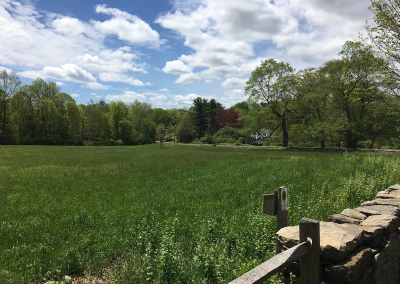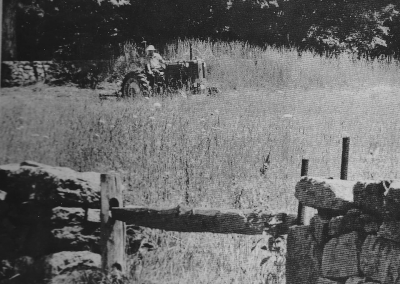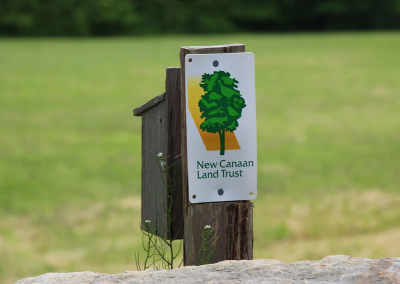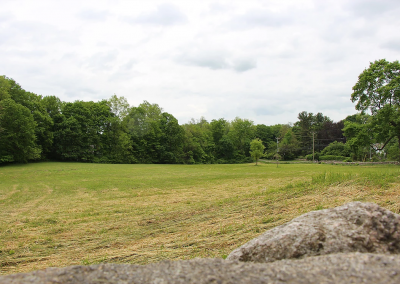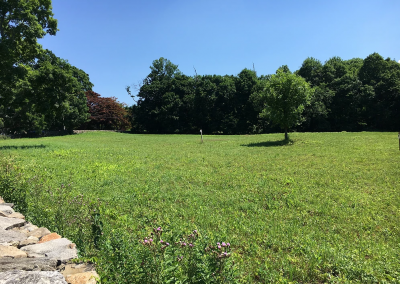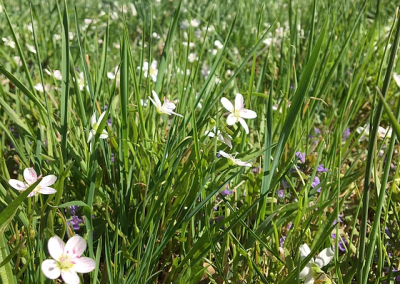Hannan-Eberstadt Field
Location: At the corner of Canoe Hill Road and Smith Ridge Road (Hwy 123)
Access: The property contains a very short trail through the meadow, and is best accessed from the north at the pull-off on Canoe Hill Road.
Date Protected: 1975, 1976 Acreage: 5.5 Trail Length: 200 yards
Visitation Hours: Dawn to Dusk Dogs Allowed? Yes, on leash
History: In 1975, Kenneth and Anne Hannan donated a 4.4-acre field to NCLT, with the intention that the land be kept in its natural state as a preserve for wildlife. The following year, Andrew and Anne Eberstadt donated an adjacent 1-acre parcel of woodlands, bringing the total acreage up to 5.5 acres. The original appraisal describes the land as “…most attractive, being mostly open level field ringed by mature trees to the east and south. To the west and north is an exceptionally well-finished stone wall which appears to have been built more recently than most in the area. In fact, the beauty of this parcel has long been a topic of conversation with local people, particularly because of its high visibility.”
The wall was indeed built, or at least re-built, more recently than most. According to Kenneth Hannan, the land donor, the wall was constructed by Antonio Vitti over the years 1933-1940. Vitti had worked for the family of Gesine Engel, who owned the field at the time, after he had returned from WWI in 1919. There is a commemorative stone at the northeast corner of the wall describing the work. Today, the wall makes a 900-foot arc around the edge of the field. At the center of which stands a young oak tree.
Land Stewardship: NCLT maintains the area inside of the stone wall as meadow through annual mowing and removal of invasive or woody plants. This continued care is needed to maintain a diverse array of grasses and wildflowers, and to prevent woody plants and trees from taking over the field. In 2019, NCLT pruned nearly all of the perimeter trees, and removed dozens of invasive bushes from the edge of the field. This project restored the field to its original area, and will help to support an even larger population of pollinators and migratory birds. The wooded buffer around the field is maintained for edge habitat, and provides cover and nesting sites for songbirds, raptors, deer, foxes, and small mammals.
Explore a 360 Degree Photo of the Hannan Field:
